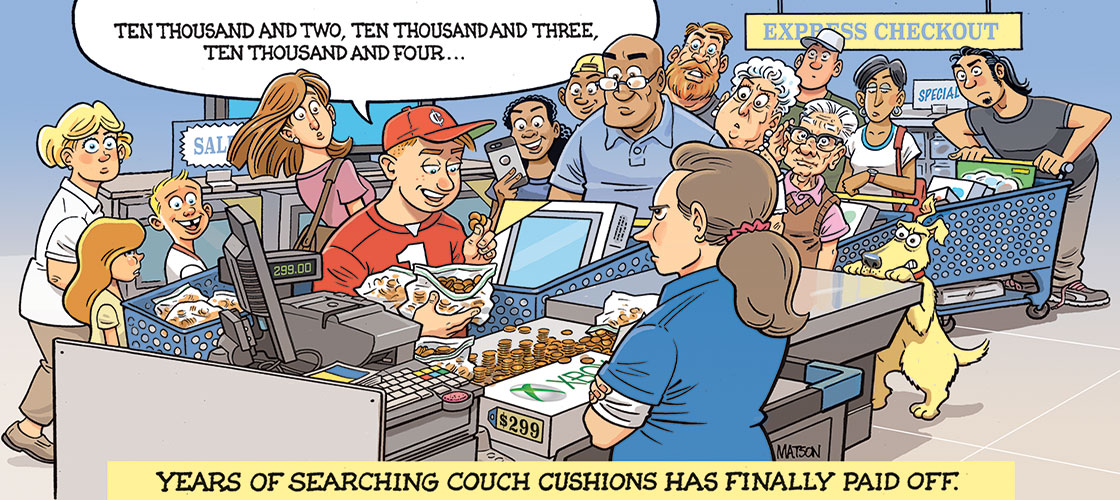America’s pennies are born at the U.S. Mint, the government agency that makes all our coins. Oddly, it costs the Mint more than a penny to produce a penny. First, there is the cost of the zinc and copper, the metals pennies are made of. Then there is the cost of running the Mint, which includes maintaining machines and paying the people who work there. Add it all up, and the government loses half a cent for each of the billions of pennies it produces every year—only to have most of those coins end up lost behind furniture, tossed into fountains, or stashed away in jars. If we stopped making pennies, taxpayers would save millions of dollars a year.
Then there is the fact that making pennies wastes zinc and copper. These metals are important natural resources that can be found in many common items—sunscreen, laptops, batteries, and washing machines. Shouldn’t we limit our use of zinc and copper to products people actually use?
But before you start a down-with-the-penny rally in your school cafeteria, keep in mind that without pennies, things could get more expensive. Why? Prices would have to be rounded to the nearest nickel.
For example, let’s say you can get a hot dog for $1.97. Without the penny, the hot dog vendor would likely raise the price to $2 rather than lower it to $1.95. That might not sound bad, but those tiny increases could add up. Then again, Canada minted its last one-cent coin in 2012, and prices there have not gone up enough to cause problems.

